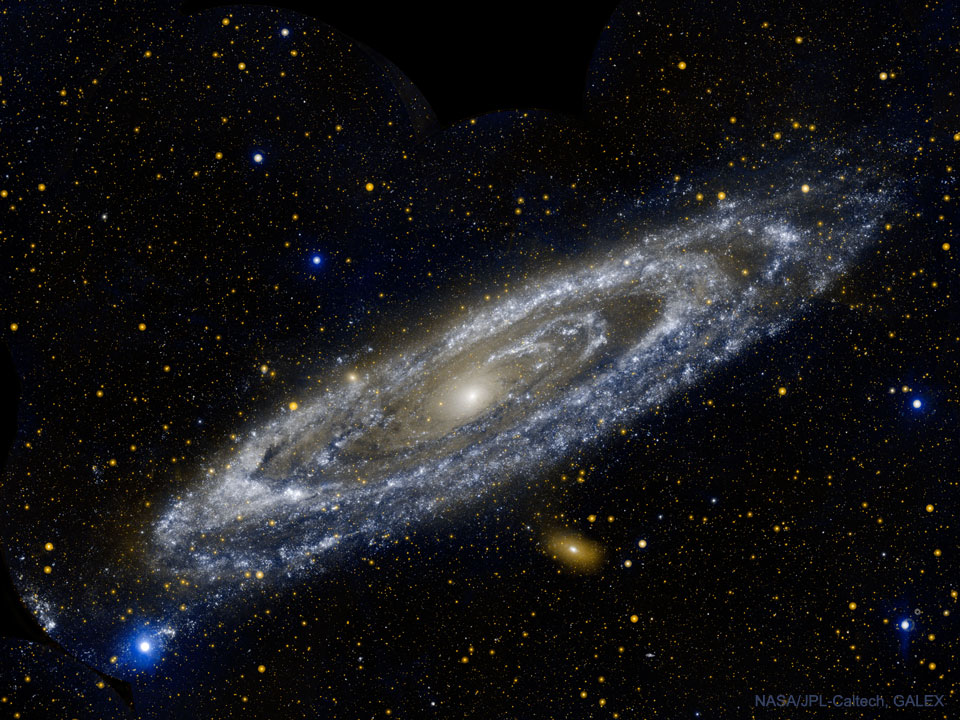紫外线下的仙女座星系
(原标题: The Andromeda Galaxy in Ultraviolet)
2021-07-18
浏览次数: 189
仙女座星系在紫外线下是什么样子?环绕银河系中心的年轻蓝色恒星占主导地位。仙女座星系,也被称为M31,距离我们只有250万光年,就在大星系的隔壁。2003年,美国宇航局的星系演化探测器(GALEX)卫星望远镜拍摄了11个不同的图像场,在紫外线下拍摄了这幅螺旋星系的华丽肖像,跨度约23万光年。虽然它的旋臂在可见光图像中很突出,但仙女座的旋臂在紫外线下看起来更像环。这些环是恒星密集形成的地方,被解释为仙女座星系在2亿多年前与其较小的邻近椭圆星系M32相撞的证据。仙女座星系和我们的银河系是本星系群中质量最大的成员,预计将在几十亿年后发生碰撞——也许是在我们的太阳大气层膨胀到吞没地球的时候。
查看原文解释
What does the Andromeda galaxy look like in ultraviolet light? Young blue stars circling the galactic center dominate. A mere 2.5 million light-years away, the Andromeda Galaxy, also known as M31, really is just next door as large galaxies go. Spanning about 230,000 light-years, it took 11 different image fields from NASA's Galaxy Evolution Explorer (GALEX) satellite telescope to produce this gorgeous portrait of the spiral galaxy in ultraviolet light in 2003. While its spiral arms stand out in visible light images, Andromeda's arms look more like rings in ultraviolet. The rings are sites of intense star formation and have been interpreted as evidence that Andromeda collided with its smaller neighboring elliptical galaxy M32 more than 200 million years ago. The Andromeda galaxy and our own comparable Milky Way galaxy are the most massive members of the Local Group of galaxies and are projected to collide in several billion years -- perhaps around the time that our Sun's atmosphere will expand to engulf the Earth.
